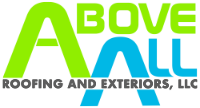How to Clean Vinyl Siding
One of vinyl’s most appealing features is its ease of maintenance. Cleaning usually involves just three things: water, mild detergent and, at times, a little bit of elbow grease. It is truly a fix-it-and-forget-it home exterior! Keep reading for more details on how to clean vinyl siding.
Unlike painted wood, there is no need to sand, varnish or re-paint vinyl cladding every few years. Dirt won’t embed in the nonporous surface. It is also extremely easy to clean of spider webs, grime, paint, and bird droppings.
How to Clean Vinyl Siding – Regular Cleansing
Keeping your siding and trim free of dirt involves only water and soap. Most people use an ordinary garden hose to rinse away top soil and dust. If they cling, you can use a sponge, soft brush or rag to dislodge it.
Can You Pressure Wash Vinyl Panels?
Sometimes a pressure washer is a more efficient way to cleanse. However, it is very important to read the manufacturer’s guide or ask your contractor before you use this method: some manufacturers do not recommend pressure washing; others list a certain water pressure. If you are at all unsure of how to clean vinyl siding using hydropressure, follow instructions to keep your warranty valid.
Most manufacturers also caution against using power washers around wall openings such as doors or windows, exterior plumbing and electrical outlets.
How to Clean Vinyl Siding Safely
It’s important to keep high pressure hoses and power sprayers pointed at eye level or below. You don’t want to force water beneath the panels. While vinyl cladding is designed to withstand driving rain, directing water up under the siding invites moisture damage.
Most ordinary household cleansers can be used on vinyl cladding without difficulty as long as they are rinsed off thoroughly with water before they dry. Concentrated active ingredients can damage the color or finish if they are left on or exposed to sunlight.
For best results, start at the bottom of the house and work upward, rinsing the cleaning solution completely before it dries.
Don’t use organic solvents, nail polish remover, furniture polish or undiluted bleach, as these can mar the finish of the vinyl.
Cover any brick facades to keep them free of excess runoff and cleansers.
How to Clean Vinyl Siding – Scrubbing
A brush or long-handled scrubber makes cleanup easy, especially if dirt is caked on or hard to reach. Even though vinyl is tough, most manufacturers recommended soft-bristle brushes and gentle pressure to avoid pushing grime into textured surfaces.
The Best Cleaners to Use
The Vinyl Siding Institute suggests using ordinary ammonia-based glass cleaners, mild household detergents, wood oil soap and scrubbing pads on most types of siding – but always check with the manufacturer’s guidebook. It is also wise to clean a small and inconspicuous area first to see how the material reacts to a cleanser you haven’t used before.
Stubborn Grease
Scouring pads, and solutions such as Soft Scrub or Lestoil, will dissolve a lot of grime: hardened droppings, crayon, oil and splattered paint. Do not use liquid degreaser solutions or acetone, as they can ruin the finish.
Removal of Mildew and Mold
It is important to physically remove fungal growth, not just treat it with chemicals. Industry groups generally recommend these types of solutions:
Commercial cleaners such as Windex or Fantastik might work on small areas.
A 30:70 solution of white vinegar to water is a natural and effective way to kill mold on larger areas.
For stubborn growth, try mixing 2/3 cup powdered all-purpose cleaner with 1/3 cup powdered laundry detergent, 1 quart of liquid bleach and 1 gallon of water.
Every manufacturer has its own recommended cleansers, methods and cautions. We emphasize that you should consult your guidebook to avoid voiding your warranty. With care and common sense, you will know how to clean vinyl siding gently and effectively. You will enjoy its easy-care beauty for decades.
We offer vinyl siding installation, rain gutter services and window replacement in Birmingham, Mountain Brook, Vestavia, Hoover, AL.
